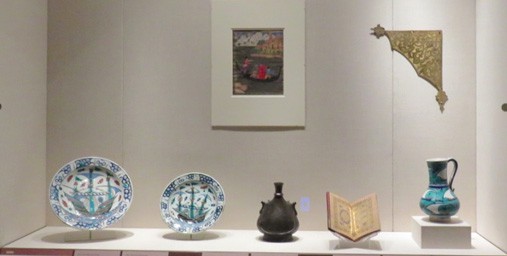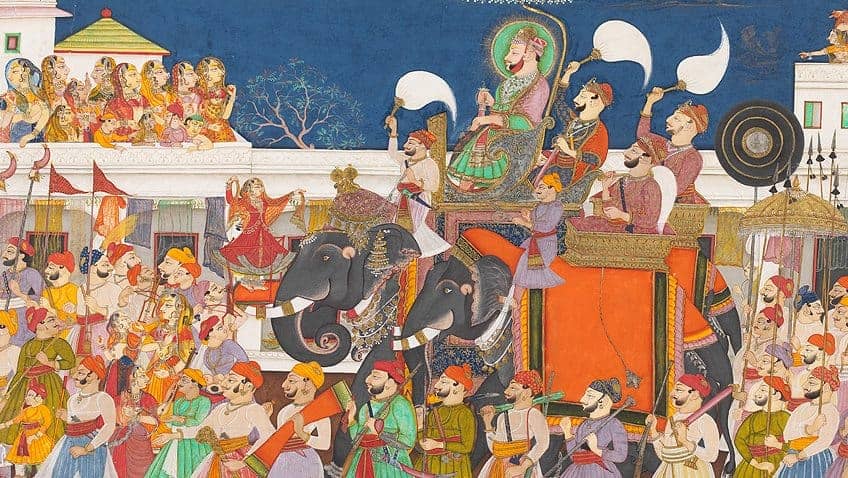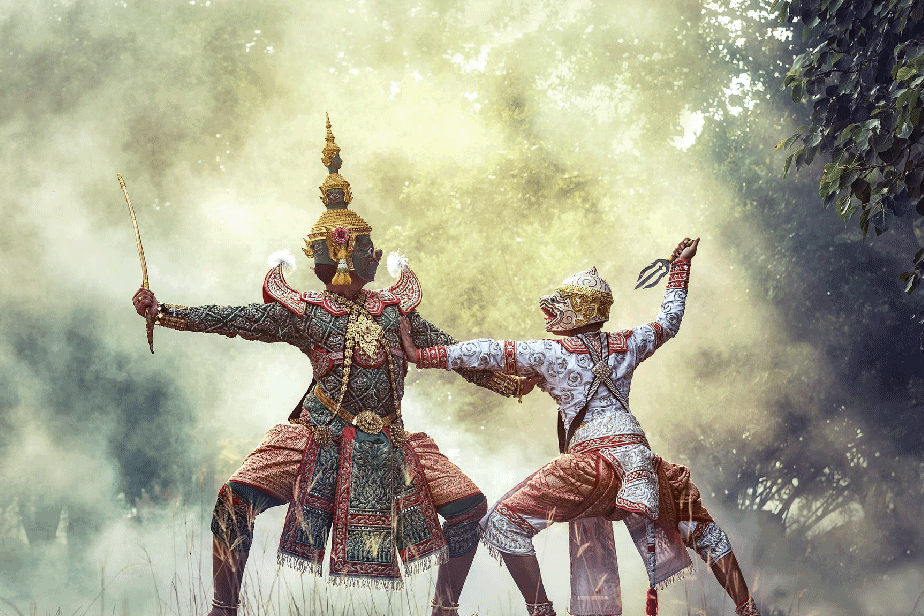Culture means the patterns and characteristics of human behavior, and all that entails in terms of religion, beliefs, social norms, arts, customs, and habits
The word “culture” is used in different ways by different people.
To some, it might mean a string quartet and the use of multiple utensils at dinner. To others, it might be used in a vague way when planning a holiday overseas. If you are a scientist it means a petri dish full of microorganisms.
This is something every human experience and the way you experience it can define your life.
Culture is shared. Culture is learned, and it is not biological.
Rather, it might be said that it is developed as we seek to satisfy our biological needs. It belongs to us, to our families, our peers, our art, and institutions.
What is Culture?
Culture means the patterns and characteristics of human behavior. Culture is one collective term of religion, beliefs, social norms, arts, customs, and habits that we possess
The interesting part is that culture, as a term, almost eludes absolute definition.
Because it is something intrinsic to our humanity, perhaps, and humans, as a rule, also elude definition. That has not stopped some of history’s brightest minds from attempting to define it, however.

The first person to use the term “culture” in the way we currently understand it was Edward B. Tylor, an anthropologist,
He explained culture as “that complex whole which includes knowledge, belief, art, law, morals, custom, and any other capabilities and habits acquired by man as a member of society.” ( Primitive Culture, 1871).
The Famous Definitions of Culture
Geert Hofstede said
“Culture is the collective programming of the human mind that distinguishes the members of one human group from those of another. Culture in this sense is a system of collectively held values.”
Linton said
“A culture is a configuration of learned behaviors and results of behavior whose component elements are shared and transmitted by the members of a particular society”
In L.A. Samovar & R.E. Porter (Eds.), Communication Between Cultures. Belmont, CA: Wadsworth. refers
“Culture is the collective programming of the mind which distinguishes the members of one category of people from another.” – National cultures and corporate cultures.
Edgar Schein quoted
“Culture is the deeper level of basic assumptions and beliefs that are shared by members of an organization, that operate unconsciously and define in a basic ‘taken for granted’ fashion an organization’s view of its self and its environment.”
What is Culture in Anthropology?
Anthropology is the study of humanity, including prehistoric origins and contemporary human diversity. Often, it is confused with many other disciplines around humanity, history, sociology, etc., anthropology is far broader in scope
The culture of a society pervades it to its very roots.
- Biological anthropology — the study of the biological side of human including the evolution
- Archaeology – the study of past human cultures through their material remains.
- Linguistic anthropology – the study of human communication, including its origins, history, and variation, and change.
- Cultural anthropology – the study of living peoples and their cultures, including variation and change.
The fourth discipline – cultural anthropology – defines the culture to a deeper level by analyzing various two key aspects of culture
- Diversity – Refers to the distinctive behaviors of humans and societies
- Change – Refers to the evolution of these distinct behaviors and humans adapted to it.

Overall, cultural anthropology refers to how culture affects the way people live, the way they interact, the art they make, the jobs they hold, their beliefs, and relationships.
And yet an archaeologist digging up an ancient site, finding wall stubs and pottery fragments, could never say that they have dug up “culture”.
The results of the culture are there for all to see: the patterns on the pottery, the places of worship, the way a family home was set up. But they are remains, nothing more.
Culture belongs to life itself.
The relation between culture and society
It can be a little difficult to draw the lines between culture and society. Both involve the way we live, both involve beliefs and systems, both are formed by groups of people.

A society is a group of organisms that interact with one another. This might mean a school of fish, a flock of birds, a beehive, and so on. Human societies are similar, as they are groups of individuals who interact with one another, though not always directly. In human societies, however, the behavior of the group is not just determined by survival, but by history, tradition, and expectation.
Yet people living in a single society can have different cultures. So society and culture are not the same things – but they are linked.
If culture is a pattern of people’s behavior, and if people live in societies, then, of course, they are going to be tied together at multiple points.
And culture cannot exist without society, without people coming together and exchanging ideas and experiences. Without groups of people living together, why would we ever have needed to develop language or politics? You cannot have one without the other.
Culture is all about Learned Behaviors
Culture is not something that we are born knowing. No baby is born being able to understand art, or speaking the language of its parents. Yet what it does possess is a desire to communicate and be understood – a desire it generally seeks to fill by screaming, which works out just fine, to begin with. But then, it learns that different noises mean different things, and so language begins to be learned.

Because of this, culture is also something that accumulates. It is built on overtime.
It’s not as though a group of people in 1000BC sat down and discussed whether they were going to use forks or chopsticks, or whether they were going to teach math in school. These things developed slowly – and now, millennia later, schoolchildren are learning mathematical concepts developed by ancient Greeks.
Art and Culture – A soulful connection
Art is yet another concept that is very difficult to define.
Abby Willowroot – “Art speaks the soul of its culture”
But when it comes to a shared understanding of art within a group of people, one could say that art is the physical manifestation of the culture to which it belongs – to the point that sometimes it almost seems impossible to separate the culture from its art.

If you pass a wedding venue and see it crowded with paper swans, it doesn’t matter if you are in Texas, Perth or Abu Dhabi, you will immediately recognize the sight as belonging to the culture of Japan.
Geometric patterns with bright colors and striking contrast might bring to mind traditional Kenyan textiles, even if seen in a window in Prague.
“Scandinavian interior design” could be found in a desert.
In addition to this, there is a reason great art movements tend to find their momentum in cities.
That’s where you can find the most people, packed in closely together – and, as a result, that’s where the cultures to which they belong become the richest, the densest, the most likely to turn into something new.
And sometimes, finding themselves so close to other cultures, they find themselves rubbing together and creating sparks.
An Adaptive Mechanism
When we look at the human experience in all its needs and forms, culture can sometimes seem like something of an extra.
True, humans create art, and language, and politics.
But these things, while adding to the richness, complexity, or possibilities of our lives, do not seem to be necessary for survival.
After all, a person could live in a hut on a hill for their entire lives and never see another human being.
They might never learn a language, create art, or develop an understanding of authority; as long as they can hunt and gather, they will do just fine.
And yet, if you look at cultures across the world, there seem to be very obvious differences between them that have sprung from a need to adapt.
For example, humans are warm-blooded creatures, which was fine when we were all living in subtropical conditions a few million years ago, but when you look further afield and forward in time, you see the mechanisms humans have put in place to survive the environments they moved to.
Thus we have architecture and communal planning.
Unlike other organisms, we did not wait for evolutionary adaptation to allow us to thrive in these new climates. Instead, we invented things to help us – things which became a part of the cultures which developed them.
From the clothes we wear to the food we eat, to the shape of our roofs, we can see how each culture was affected by humanity’s need for survival.
And, let’s be honest, it worked – we have dominated the planet with our technology and subsequent population growth. (Whether that is a good thing or not is quite another matter.)
Culture’s relation to Nature
Depending on the way we have defined culture, it can be argued that humans are not the only species to have developed it.
Not that we’re going to find any other animals that create paper cranes for their weddings, but using the broad and relatively simplistic definition of a complex pattern of learned behavior, we can see examples of culture in other species.
Chimpanzees, along with other intelligent primates, seem to be the closest contenders for this.
The young chimpanzees learn from the older ones – whether hunting or gathering skills, communication, or sexual education.
This is a fascinating addition to any discussions one might have regarding culture.
It opens up the possibility that culture is not strictly something that belongs to humans, but perhaps that it is the skill we have developed above all other animals.
We can be outrun, out-swam or out-fought by any number of other species. But our patterns of behavior, in terms of complexity and possibility, leave them all behind.
Culture, from a historical perspective..
The following extract from Kevin Avruch, famous anthropologist and sociologist
A great deal of the problem [of understanding the idea of culture] is caused by the different usages of the word as it was increasingly used in the nineteenth century. Broadly talking, it had been found in three ways (most of that can be found nowadays at the same time). Initial, as stated in Matthew Arnolds’ Culture and Anarchy (1867), cultures are known as special intellectual or imaginative endeavors or items, what right now we might get in touch with “high culture” in contrast to “popular culture” (or “folkways”).
From this classification, only a portion – typically a small one – associated with a sociable team “has” culture. (The rest are possible resources for anarchy!) This sensation of traditions is a lot more closely linked to beauty rather than to interpersonal science.
To some extent in the reaction to this utilization, another, as pioneered by Edward Tylor in Primitive Culture (1870), described a quality possessed by everybody in most social groupings, who nevertheless may be arrayed over an improvement (evolutionary) continuum (in Lewis Henry Morgan’s plan) from “savagery” through “barbarism” to “civilization”.
It is actually really worth quoting Tylor’s definition in their entirety initial, mainly because it became the foundational one for anthropology and 2nd because it in part explains why Kroeber and Kluckhohn located definitional fecundity from the early 1950s. Tylor’s meaning of traditions is “that intricate whole which includes understanding, notion, artwork, morals, regulation, custom, and any other features and practices obtained by a person as part of society”.
As opposed to Arnold’s perspective, all people “have” customs, they will obtain by virtue of account in some social team – culture. And a total grab case of stuff, from knowledge to behavior to features, tends to make up customs. The extreme inclusivity of Tylor’s description stayed with anthropology a very long time it can be one particular reason politics experts who became interested in social queries from the late 1950s experienced it needed to delimit their relevant social domain to “political culture”.
Although the best legacy of Tylor’s definition lay down within his “complex whole” formulation. This was recognized even by those later anthropologists who forcefully denied his evolutionism. They had taken it to mean that cultures were wholes – integrated systems. Even if this assertion has fantastic heuristic importance, in addition, it, since we shall disagree below, simplifies the entire world substantially. The third and last using traditions created in anthropology inside the twentieth-century work of Franz Boas and his awesome college students, although with roots within the eighteenth-century articles of Johann von Herder.
As Tylor reacted to Arnold to establish a technological (as opposed to visual) grounds for customs, so Boas reacted against Tylor and other interpersonal evolutionists. Whereas the evolutionists stressed the widespread personality of your single culture, with assorted societies arrayed from savage to civilized, Boas emphasized the individuality of the many and diverse ethnicities of several people or communities. Additionally, he dismissed the worth judgments he found inherent in both the Arnoldian and Tylorean sights of the tradition for Boas, you need to never separate higher from lower traditions, and another ought not differentially valorize civilizations as savage or civilized. Here, then, are three totally different understandings of tradition.
A portion of the difficulty within the expression depends on its number of connotations. But to compound concerns, the difficulties usually are not merely conceptual or semantic. Every one of the usages and understandings come linked to, or Primary Principles 2 Precisely what is Customs? | © Spencer-Oatey 2012 might be connected to, distinct politics or ideological agendas that, in a single type or some other, still resonate these days.
Conclusion – What is Culture?
Culture is inherent.
Culture is developed as we seek to fill our basic needs.
It is learned, taught from one generation to the next, picked up when you had no idea that you were paying attention.
Culture is cumulative, ideas, and behaviors collected by each society. Yes, like they were debris being picked up and carried along by a river.
It is not programmed, it is not automatic, but it is not something that we can avoid becoming part of.
The beliefs and social behaviors are ingrained into every human on earth. These social norms are connecting us to each other within our own culture.
And cross-culturally, these norms are allowing us to reach each other across what sometimes seems to be unfathomable distances.
Culture is everywhere – It’s is in art, music, dance, the way we decorate our pottery.
It is our governmental systems, it is our leisure time, it is the places of worship we build.
Culture is the way we speak to one another, whether we take our shoes off before we come into the house.
It is shared behavior; the result of humanity trying to negotiate the world it finds itself in and thriving as it does.


